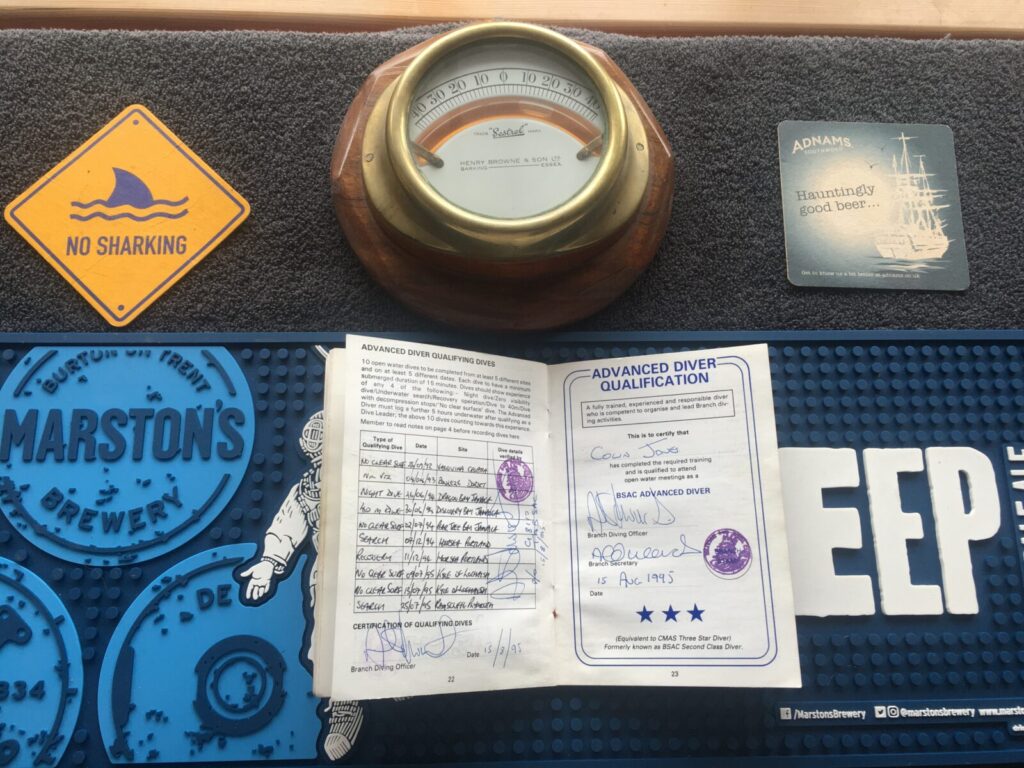I had completed my Club Instructor Training Course at Bulford over the weekend of the 12 & 13 of February 1994, having just got back from diving Cyprus (another post or Two on here), the course was a prescribed one, comprising, as I recall, of pool-work and presentation of theory topics to the other students, which then was critiqued in order to provide feedback. I had no problem with the course, enjoying the training and taking away from the attendance an “Assistant Club Instructor” status which allowed me to apply for the Club Instructor exam, where I would be tested in the same way, a presentation, a pool lesson and then the written exam. The first attempt……. I failed, I got the “Thin” letter…. how the hell did that happen, the pool lesson had gone well, no safety slips, no demonstration slips….(I was positive), could it have been the class presentation, I had a dull subject but had presented no worse than some I had watched and (I thought) better than average……. I was gutted, but it was what it was….if nothing else, it served to kill any Hubris I might have been feeling up to then and it didn’t deter me!
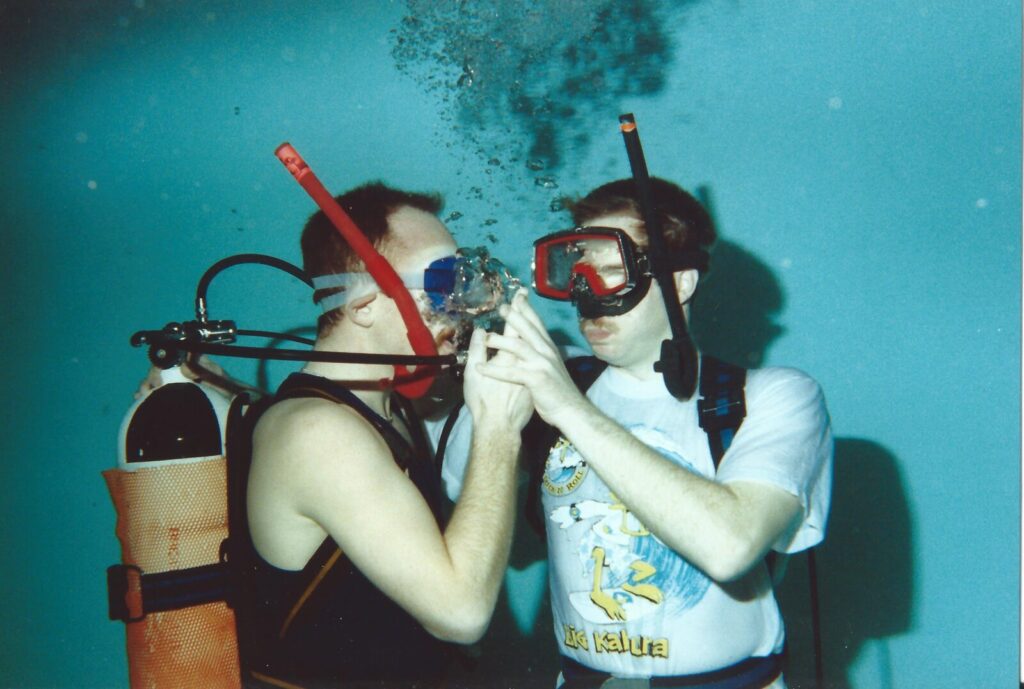
I put right back in for the next exam dates I could get. I don’t see the point of looking too hard for blame, I prefer to move on and, where possible, “up”, but it had pissed me off and there didn’t seem any good reason for it………. but what the hell! On my next attempt in November of 1994 I sailed through, no nerves, no anger, just raw determination to stick it right back up those who failed me last time, this time it was all new people, I was exactly the same person presenting, it was practically, to all intent and purpose, the same subject (given the classroom subject was less dull as I recall, but I struggle to remember exactly what either were today tbh) but a completely different result, and I had a straight pass…….. 15th November 1994 was a good day……. redemption!
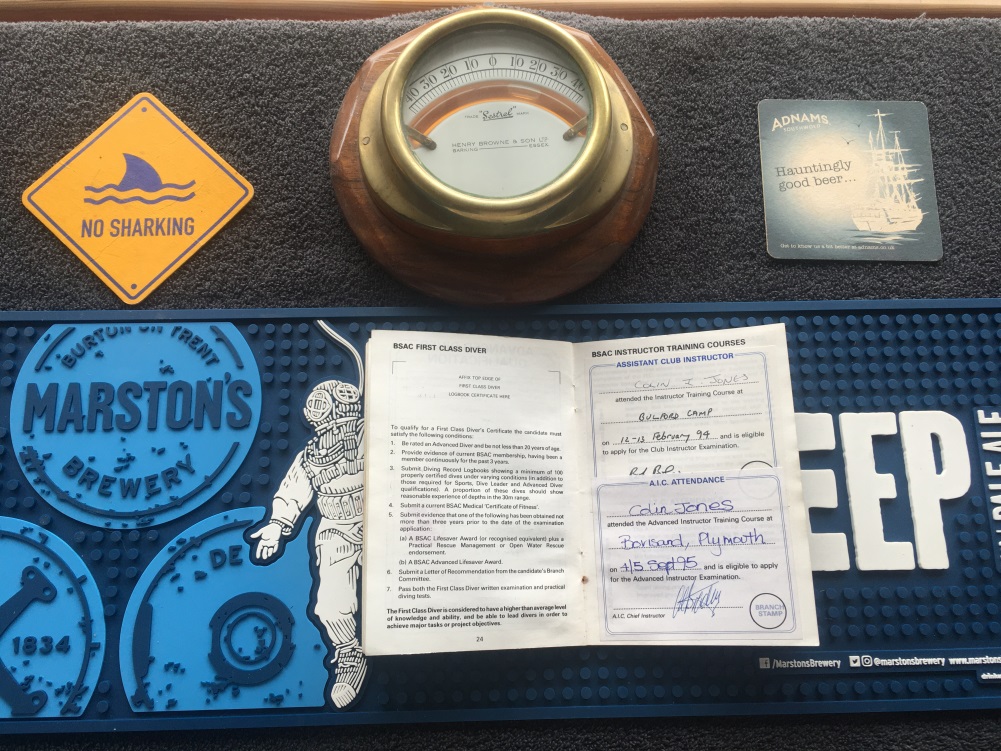
BSAC Advanced Diver
The BSAC Advanced Diver Qualification was all I had in my sights before Former Yugoslavia, I hadn’t considered training other divers, apart from the help given to those joining the dive club in the usual way people do, military newly posted in, or coming in with friends, the odd civilian looking for dives and not nervous around the military, or the long established members seeking adventure at the weekend, a buddy to dive with, or someone to ask when you didn’t know what to do on a particular dive. The BSAC was an informal club environment for the most part, the military nature of TIDSAC meant safety was paramount, and there were a few more structured aspects to training, but it was still a relaxed way to learn your diving!
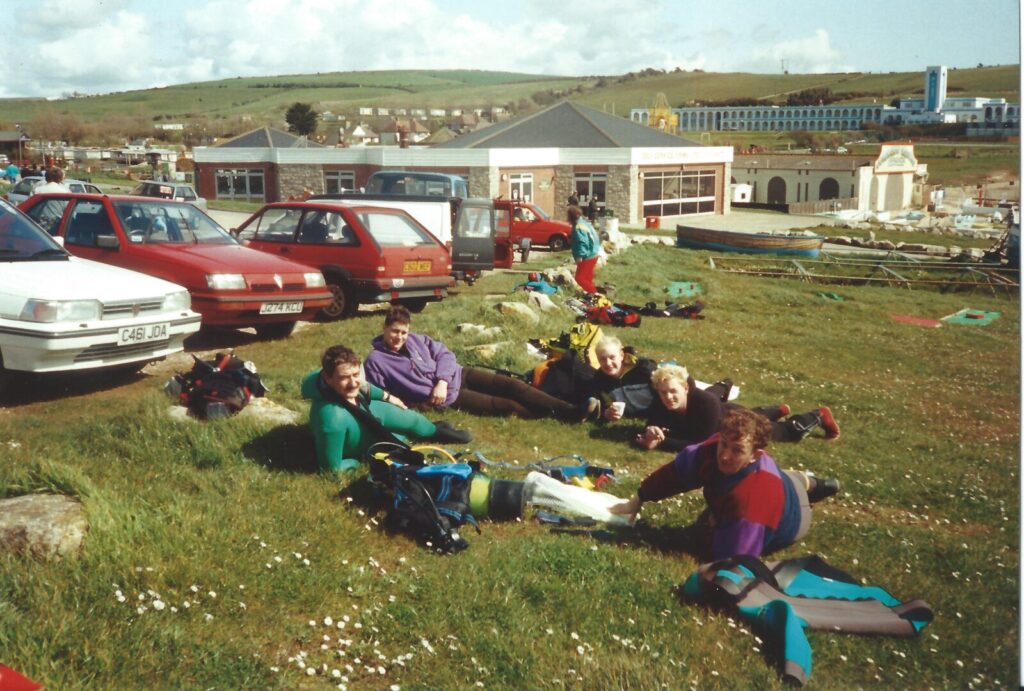
I had just come back off one of the most adventurous dive weeks I could imagine in Lochalsh, deeper dives, drift dives and fantastic wreck diving, and there was more planned just a short week later, I was booked on an Advanced Diver Course back at Bovisands with JSSADC. Things were ramping up and I was getting some damn good diving in. The BSAC Advanced Diver qualification was there to show your progression after your Dive Leader qualification, it was planned as a personal development and as a leadership piece, the aim being to funnel you into different diving situations making you a more rounded diver. The Qualification Record Book summarizes the expectations: “10 open water dives to be completed from at least 5 different sites and on at least 5 different dates. Each dive to have a minimum submerged duration of 15 minutes. Dives should show experience of any 4 of the following:- Night Dive/Zero Visibility dive, Underwater Search/Recovery Operation, Dive to 40m/Dive with decompression stops/No clear surface dive. The Advanced Diver must log a further 5 hours underwater after qualifying as a dive leader; the above 10 dives counting towards this experience.”
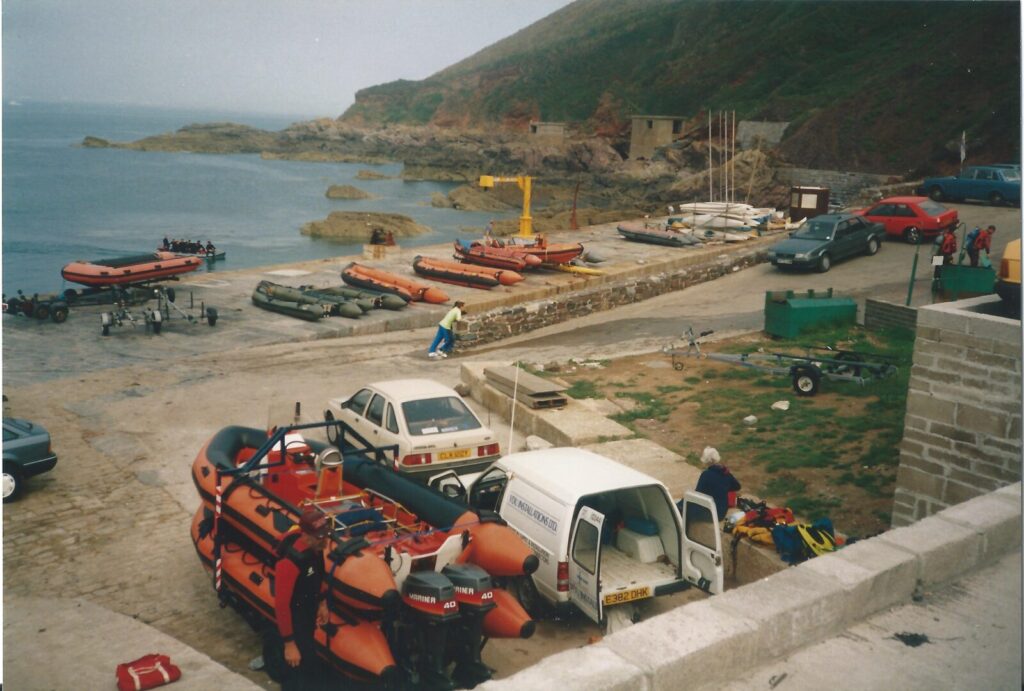
I had a wide range of the dives I would need to demonstrate the experiences expected of me for the Advanced Diver level, the JSSADC course offered a way of getting the formal lectures, delivered by highly skilled military trainers, and get more diving in too, what could be better! The theory was a big part of the Advanced course and it was pushing you to look far wider than anything to date, Small Boat handling, Charts Tides & Weather, Basic navigation……..and there were practical demonstrations, Boat handling, underwater searches, compressor operation, dive equipment reviews and physics & physiology theory too! You were required to act as a Deputy Dive Marshall and following that to demonstrate you could successfully Dive Marshall club dives, it was an opportunity to not only gain a perspective on different diving situations and more adventurous, deeper or more complex diving, but to take a more senior role in your club and understand how to give much more back in so doing!
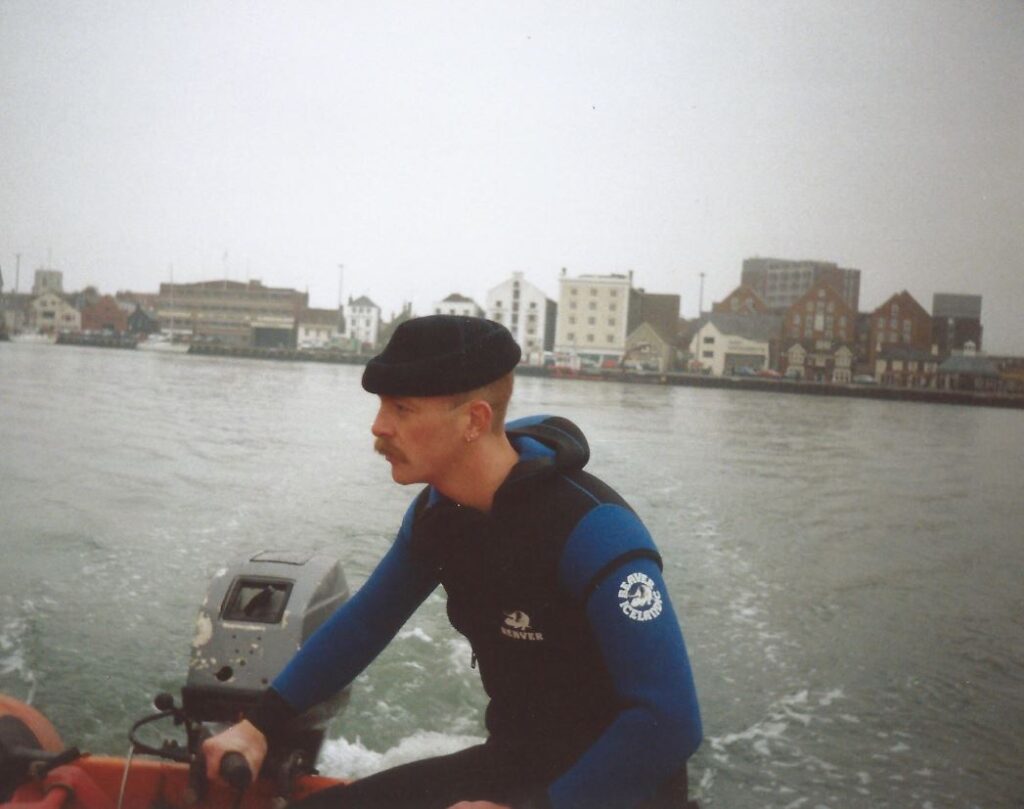
The Bovisands dives took place following the theory lessons, usually there was a lesson in the evening following the day’s activity, and sometimes one during the surface interval, if the taskings weren’t too limiting. First dive in the log, on the 21st July 1995 goes: “Small Boat – Plymouth Sound – Tinker Reef Shakeout dive off Bovisand, a hunt round the gullies 5m viz in amongst small Wrasse for a ferret – very pleasant W/Temp 17’ Air in 220 out 125 Buddy Chris” Then we were straight into diver rescue skills for a couple of dives the next day to get us back into the swing of things and to prove we were up to speed on controlled Buoyant lifts and air-sharing ascents
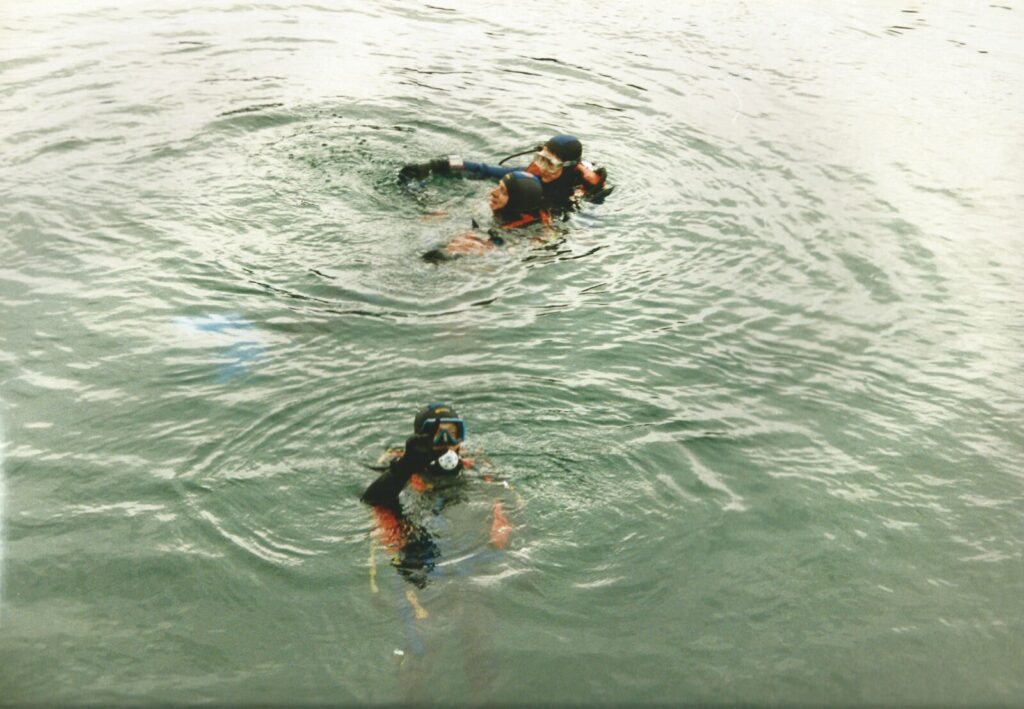
Then there was the dive planning and marshaling piece, we were expected to plan dives in buddy pairs, assign diver coxn’s, safety divers, dive objectives and sites….it was all great stuff, a feeling that we were far more in control of events, not just taking part! The next Log-book entry: “RIB Dive – Mewstone Slabs – Plymouth A dig round an old favourite in the gullies – found an old concrete mooring buoy & chain for larger vessels) & plenty of life – Wrasse – Starfish – Plumrose Anemones etc – great root! W/Temp 17’ Viz 4m Buddy Chris Air in 220 Out 120” another on the 23 July ’95 pushed us back on a previous dive-site popular with the JSSADC: “RIB dive – Breakwater (West) Plymouth ferret about another good site at the edge of the sand where it meets the S/Blocks two very good size Wrasse came to peek. Plenty of life – good dive W/Temp 17’ Viz 3m & hazy Air in 190 Out 120 Buddy Chris”
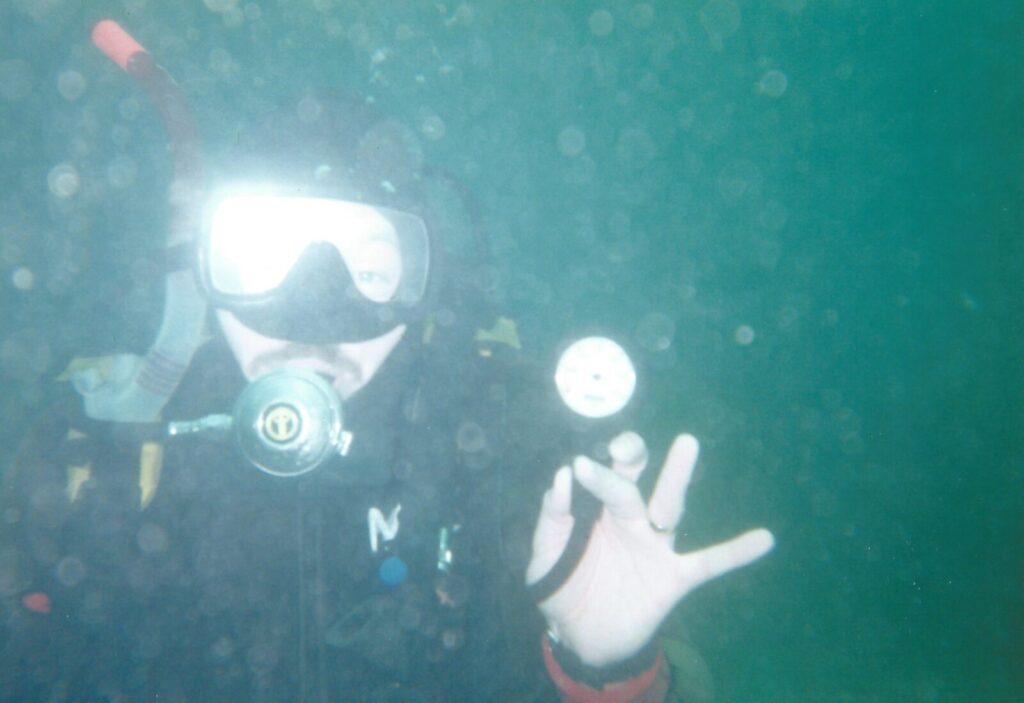
Our next dive was on the wreck of the Glen Strathallen, a former trawler converted to a luxury yacht, scuttled off Bovisands as a dive attraction April 27th 1970. Now I am not a fan of ships sunk as attractions as any diver who has dived with me will probably tell you, I didn’t know at the time that the “Glen” had been purposefully sunk, I won’t include it in the wreck section for that reason, whatever is sunk deliberately is not a “wreck” in any sense. There was little left of the Glen Strathallen some metal deck fittings, the boiler and general bits and pieces, but she made for an interesting dive on the day as the little Red book notes: “Glen Strathallen formerly a “Gin Palace” the Glen was commandeered then returned after the war, then used as a classroom & then sunk & used as a “Dems” exercise. She’s flat but in the shape of the hull the only large feature is the boiler & it’s resident Pollack, they’re fair sized. The rest is a hunt round plating & nooks & crannies with plenty of life to see low key & interesting. Viz round 3-4m…”
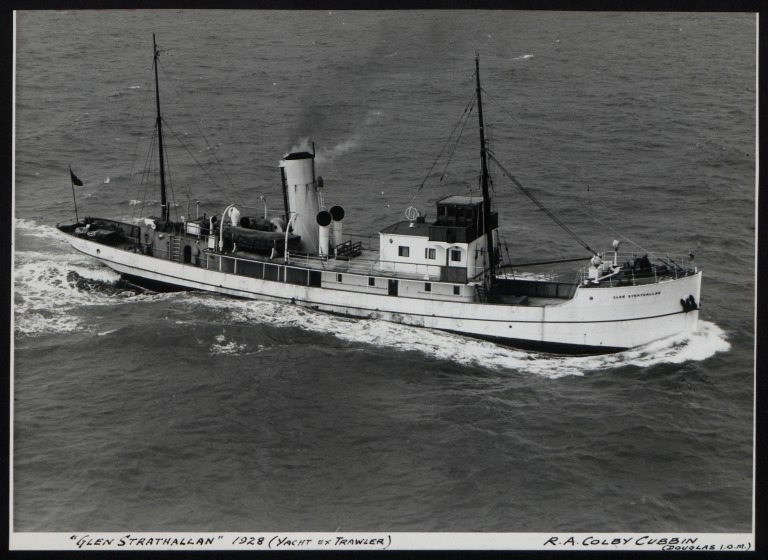
The Advanced diver course now moved into the “search and survey” diving realms for a couple of days, we were schooled in search techniques, Jack-stay, circular and compass searches we added survey techniques….. measuring and plotting squares and circular searches combining points of depth and obstructions and weight assessment, lift requirements, equipment appraisals…..It was all interesting stuff and far more oriented to commercial activities than sport diving to me, but the BSAC was a wide remit organisation, it was BSAC divers that found and co-ordinated the raising of the Mary Rose amongst other large scale enterprises, it was only a couple of years before my course that they had stopped using charges (explosives) for removing stubborn ships Propellers a whole different ball game! My log book notes: 24th July “RIB Dive – Cawsands Bay – Plymouth underwater work laying bottom line for a circular search All sorted clean and sharpish…..” and a day later: “RIB Dive – Ramscliffe Point – Plymouth Bottom & Viz survey of an area – measuring by circular search & plotting bottom conditions…” and finally on the afternoon of the 25th July: “RIB Dive – Bovisands Harbour – Plymouth Survey of a cannon to lift at a later date Very interesting doing charting & assessment….” These were progressive dives getting us used to additional tasking underwater and the equipment we would need to carry out search and recovery and lift operations, I remember the most valuable lesson of them all clearly……..keep off the bottom and don’t make the viz any worse than it already is….lessons I would never stop teaching others later in my diving journey!

The last couple of dives of the course were far more like it, we headed out to the James Egan Layne, probably the most dived shipwreck in the world at that time, one I loved and couldn’t wait to get back onto! We elected to dive the stern section on this occasion, I had not dived it previously but had heard it was a good dive, I wrote it up later saying: “1st visit to the James Egan Layne’s stern section, down the shot to 22m and took a look round the area, the stern is heavily rotted and is covered in Anemones. Lots of fish life, Wrasse, a nice John Dory, one huge Bass and plenty of Whiting & Pouting. There are areas where you can get in and about the stern & root, but I couldn’t find the rumored “shells”, very good root & a lovely photogenic wreck. A great dive. Viz 5 – 7m Air In 200 Out 90 W/Temp 16’ …”
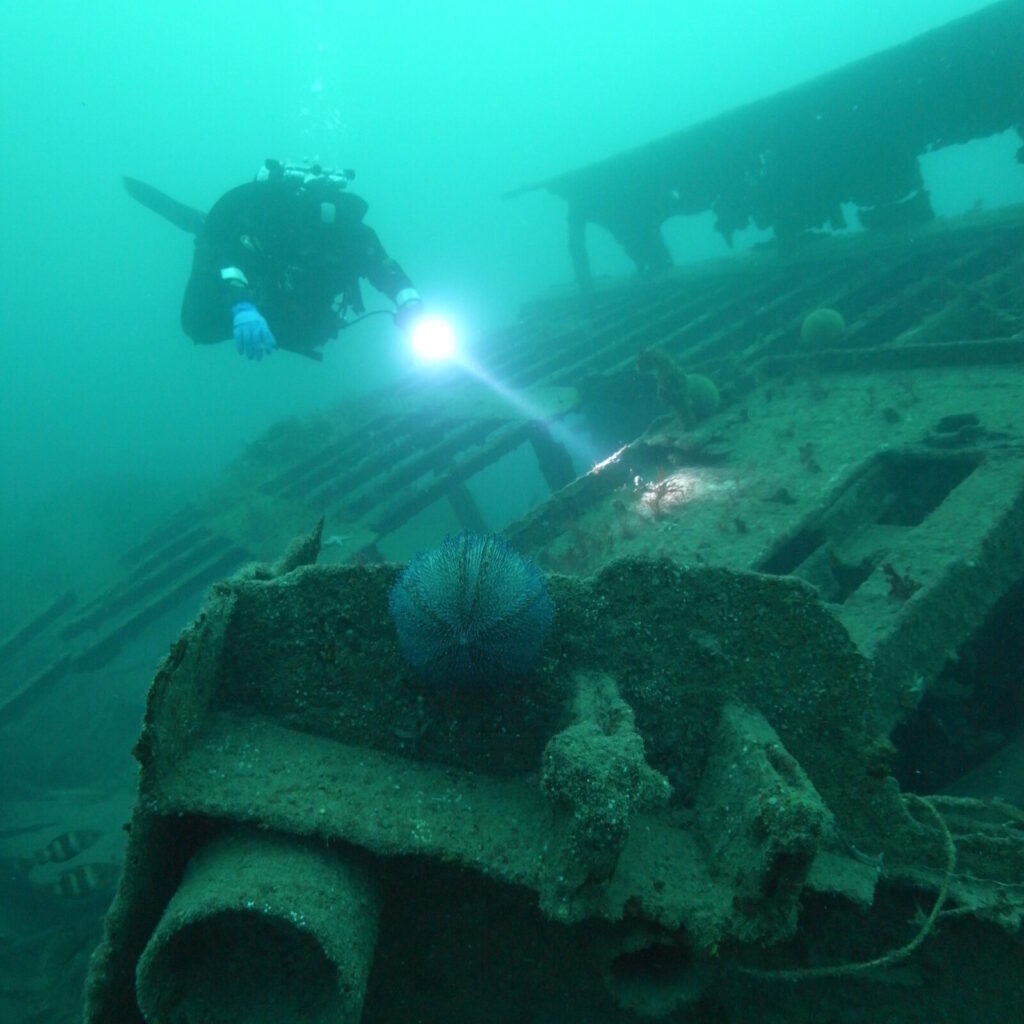
Although we took a dive on what we expected to be the Persier the next morning, sadly we saw nothing of the wreck save a couple of bits of metal that could’ve been from anything really, we were in the vicinity of the wreck but definitely not on it! And so that afternoon we motored across the sound back to Bigbury bay and onto the James Egan Layne for our last dive of the course, this time onto the main of the wreck, but it wasn’t the dive it could have been, an Atlantic swell had built overnight and my log book records: “Down on to the main bow section, viz down to 2m due to weather & an incoming tide, lots of buffeting about, uncomfortable & not that enjoyable. Eerie but banged about too much for any enjoyment Air In 200 Out 75 W/Temp 17’…” That was it, over…a week of Advanced diving had shot by and I’d loved every minute of it, all that remained was to select the dives and get them signed off to go with the lectures I’d already completed over the last year and have Adrian, the TIDSAC DO at the time, sign off my Advanced qualification……
